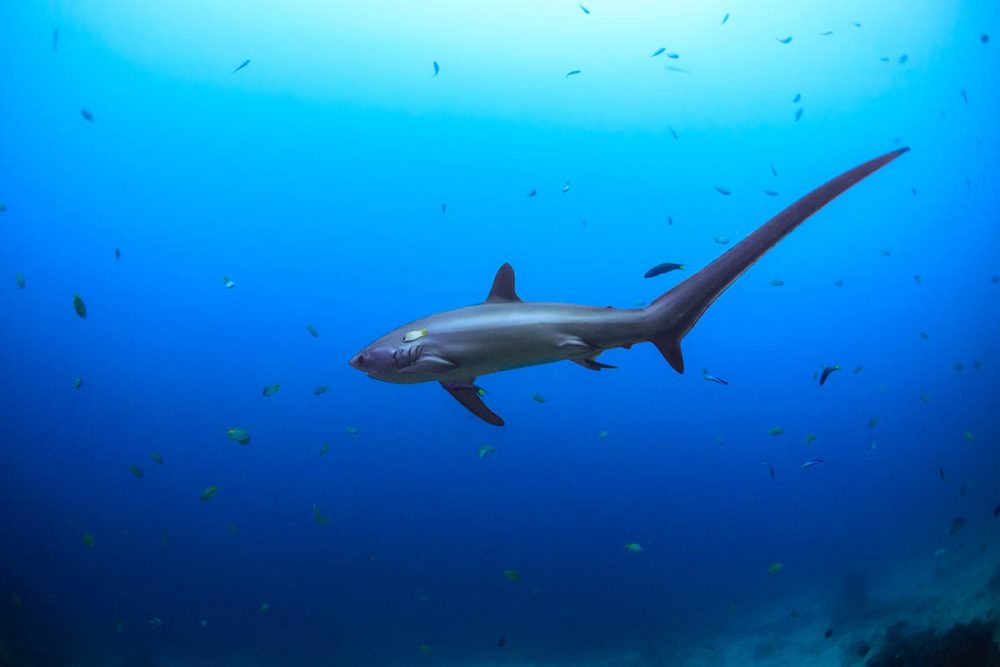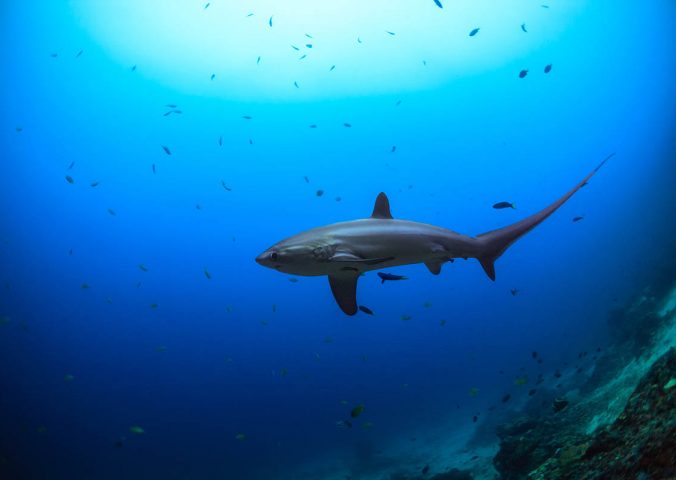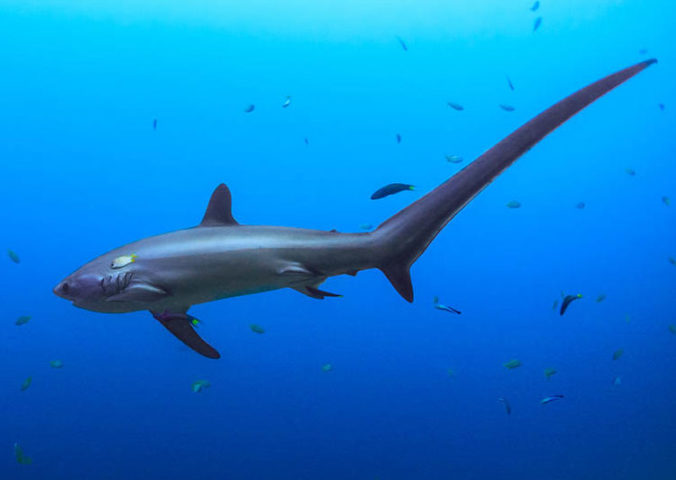About
This species has an extraordinarily long caudal fin it uses a whip to stun its prey, and distinctive prominent eyes. Although it has a circumpolar range, little is known on its biology and ecology.
In order to hunt their prey, pelagic threshers herd schooling fish together and then use their tails to stun them, making the prey easier to catch.
Pelagic threshers only produce two very large (150-190 cm) offspring per litter, making their annual rate of population increase very low (between 2 and 4%). This makes them very vulnerable to population decrease from over fishing. The embryos are oophagous, meaning that they feed on other eggs inside the female. Pelagic threshers can live up to 29 years of age.
The main threat to this species are pelagic fisheries. Along with other thresher sharks, the long caudal fin makes them vulnerable to being caught as bycatch by longline tuna fisheries and they are also caught by some targeted fisheries. Some parts of the threshers such as the skin, liver and their fins are sought after. Although, within the shark fin market, the pelagic thresher’s fins are not highly valued, they are abundant in the Hong Kong fin market. This species is mainly caught on the high seas and so there is very little regulation in place to protect this species. Catches of pelagic threshers are also under reported worldwide, making targeted conservation efforts difficult.
Conservation measures directly targeting this species are not in place, however is affected by other general tools aimed at the management of migratory shark species as well as those addressing illegal and unreported fisheries and shark’s fin trade.
- Order: Lamniformes
- Family: Alopiidae
- Population: Unknown
- Trend: decreasing
- Size: Up to 428cm (?)
- Depth Range (m): Up to 152m
EDGE Score
Distribution
The pelagic thresher is found across the globe in the Indo-Pacific Ocean.
Habitat and Ecology
Not much is known about this epipelagic species ecology. It is a highly migratory species found near the equator in winter but not in summer.



